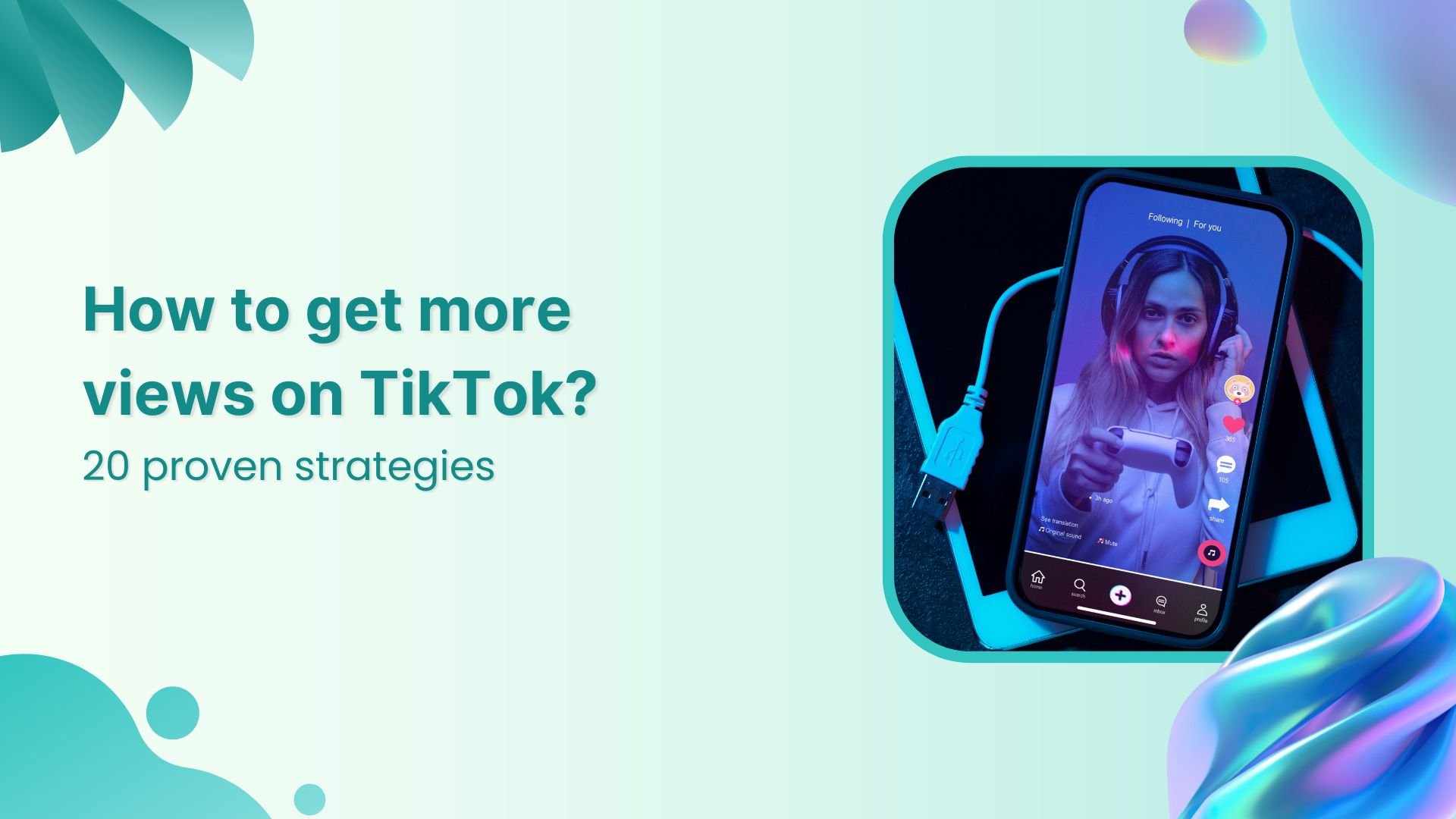Bulk-generate & schedule posts in seconds with Smart Scheduling. Try now!
How to create a perfect social media proposal?

A well-crafted social media proposal is more than just a pitch, it’s your proof that you understand the client’s audience, industry trends, and how to deliver measurable results.
In 2025, short-form videos dominate feeds, AI tools streamline content creation, and new platforms like Threads and LinkedIn Live are gaining traction. If you want to win clients and stand out, your proposal must reflect these changes.
Whether you’re a freelancer, agency, or in-house strategist, here’s a step-by-step guide to creating a social media proposal that gets approvals and builds long-term partnerships.
Why a strong social media proposal matters in 2025
The social media industry continues to grow at a staggering pace, projected to reach 6.05 billion by 2028. This growth is driving fierce competition, not just among brands, but also among agencies, freelancers, and consultants offering social media services. Clients are receiving multiple pitches at once, meaning you have just one opportunity to stand out.
A strong proposal goes beyond simply stating what you can do, it shows the client how your work will directly contribute to their business goals. It positions you as a strategic partner, not just a vendor, and communicates that you have a deep understanding of their market, audience behavior, and competitive landscape.
In a world where budgets are scrutinized more than ever, a well-crafted proposal can secure not only the project but also the client’s long-term loyalty.
How social media has changed (and Why your proposal must too)
Just a few years ago, a social media proposal might have been centered around posting frequency, creative ideas, and basic audience targeting. But 2025 has ushered in a completely new era of social media marketing, one where creativity must be paired with data-driven decision-making and multi-platform integration.
The dominance of short-form video has redefined engagement. Platforms like TikTok, Instagram Reels, and YouTube Shorts are not just for entertainment; they’re now essential tools for brand storytelling and conversions. At the same time, AI-assisted tools are enabling marketers to create high-quality, personalized content at scale, making campaigns more efficient and adaptable. Additionally, privacy changes such as GDPR updates and Apple’s iOS tracking restrictions have pushed marketers to focus on first-party data strategies and privacy-compliant analytics.
The days of a one-size-fits-all social media approach are over. Your proposal must now reflect a nuanced understanding of each platform’s strengths, audience behaviors, and algorithm updates. It needs to showcase that you are up to date with the latest social media trends and capable of delivering campaigns that resonate in today’s environment.
Related read: Social media trends for 2025
What to include in a social media proposal
Before we dive into the full step-by-step process, it’s important to understand what a modern proposal should include. At a minimum, it needs an executive summary that captures the client’s attention from the first paragraph, a section dedicated to analyzing their current presence and competitors, a well-defined content strategy with creative examples, a realistic posting schedule, a transparent budget with projected ROI, and a clear explanation of how you will measure success.
Adding mockups, brand-consistent visuals, and an AI-driven content plan can make your proposal stand out. Many marketers now also include sections on sustainability, inclusivity, and socially conscious campaigns, as brands want to align with agencies that reflect their values.
Easy steps to create a successful social media proposal
1. Understand client objectives and challenges
Begin by meeting with your client to understand their business goals and objectives. What are they looking to achieve through social media? Increased brand awareness, lead generation, customer engagement, etc.?
Every strong proposal begins with understanding what the client truly wants to achieve. This goes beyond asking about their preferred platforms or target audience; it’s about digging into their core business objectives. Are they looking to boost brand awareness, generate leads, increase website traffic, or directly drive sales? Each goal requires a different approach, so clarity here will shape the rest of your proposal.
Identifying challenges is equally important. Perhaps their engagement rates have dropped, they’re struggling to adapt to new formats like Reels, or their content is inconsistent. Use a detailed discovery session to collect these insights, either through a questionnaire or a kickoff call. When you show the client that you understand their problems better than they do, you position yourself as the solution.
Related read: Social media KPIs you should track
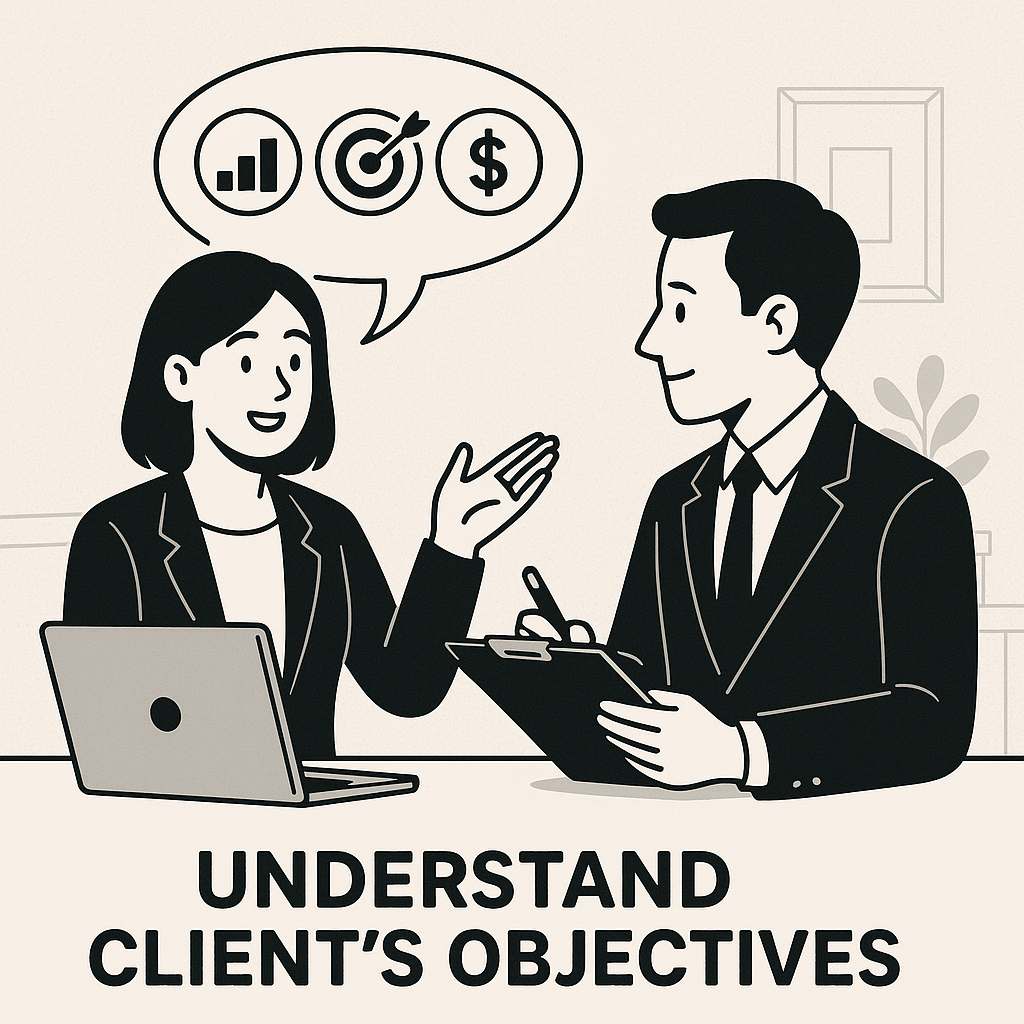
2. Conduct a social media audit:
Before suggesting any improvements, you need to know where the brand stands right now. A social media audit involves examining every aspect of their online presence from the platforms they use and the frequency of their posts to the tone of their captions and the engagement they receive. This is where you identify not only what’s working but also the missed opportunities.
For example, you might find that their Instagram content performs well but is posted inconsistently, or that their LinkedIn engagement is low due to overly promotional content. Tools like ContentStudio’s social media analytics make it easy to gather performance data and present it visually, helping clients see exactly why changes are needed.

3. Research the industry and competitors:
No proposal is complete without understanding the competitive landscape Analyzing direct competitors reveals which formats, posting times, and campaign types resonate most with the shared target audience. It also helps identify content gaps your client can fill to differentiate themselves.
In 2025, short-form videos and user-generated content (UGC) remain dominant, but interactive formats like polls, quizzes, and Q&As are also surging in popularity. This is the perfect stage to present trend insights from ContentStudio’s competitor analysis and explain how these trends can be tailored to the client’s brand voice.
Try our free Instagram competitor analytics tool!
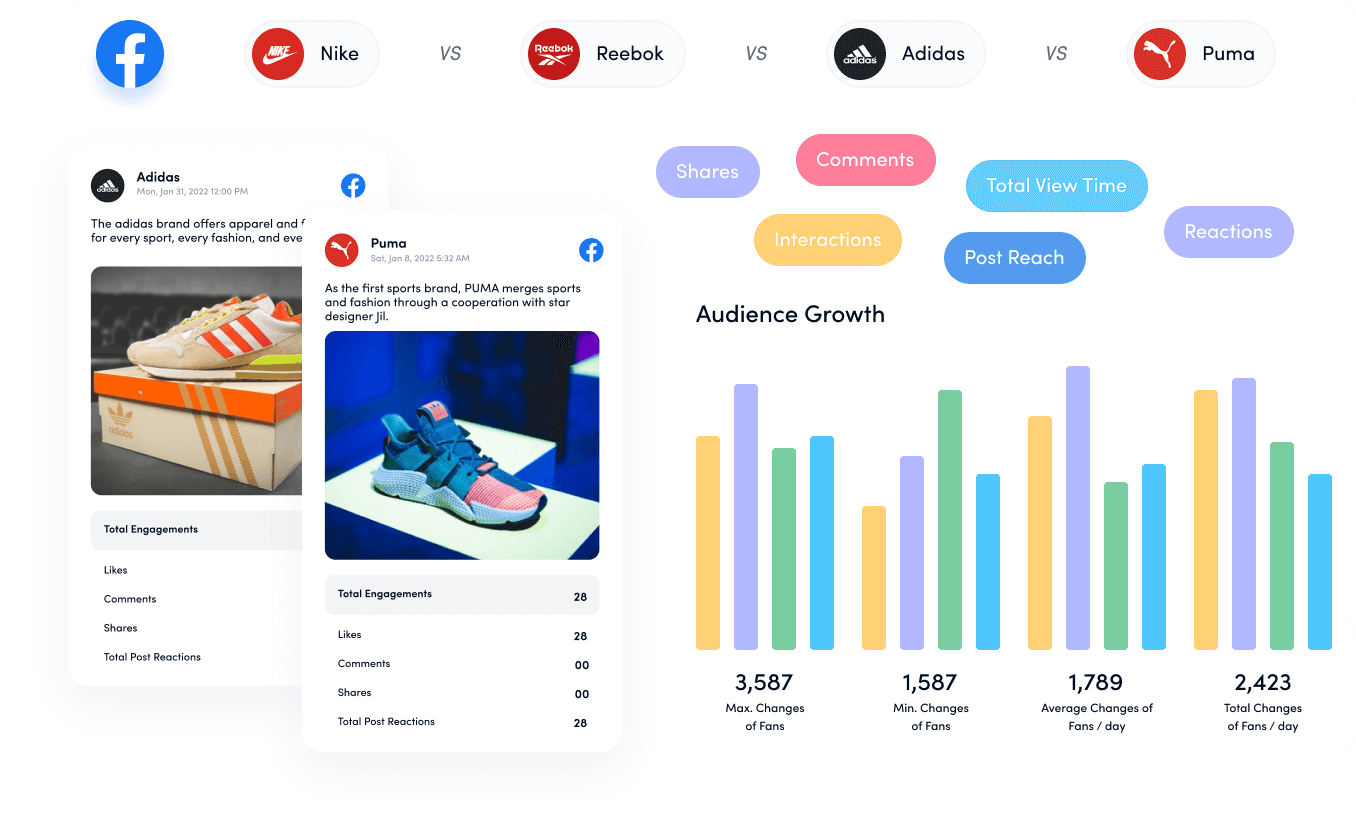
4. Define the target audience, set clear goals and KPIs:
Clearly define the target audience for the social media strategy. Understanding the audience’s demographics, interests, and behaviors will help tailor your content and approach. Establish specific, measurable, achievable, relevant, and time-bound (SMART) goals. Define key performance indicators (KPIs) aligning with the client’s business objectives.
Once you’ve gathered data from audits and competitor research, it’s time to set measurable goals. These should be SMART (Specific, Measurable, Achievable, Relevant, and Time-bound). Rather than saying “increase followers,” aim for “grow Instagram followers by 25% within six months while maintaining an engagement rate above 4%.”
Clearly define the KPIs that will measure success, these could include engagement rate, click-through rate, cost per acquisition, or ROAS. The more precise you are here, the easier it will be to prove the value of your strategy later.
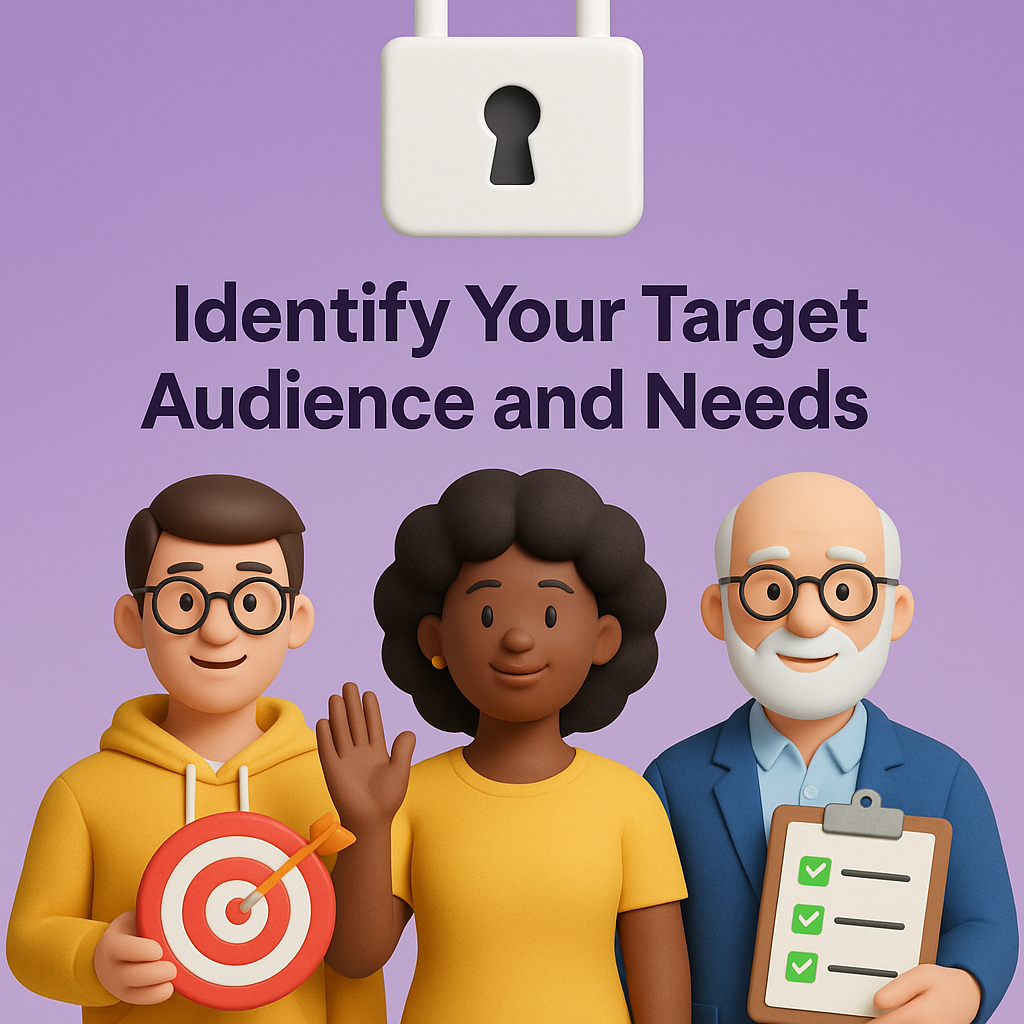
5. Propose a social media strategy:
This is the heart of your proposal. The strategy section should describe the types of content you’ll create, the social media platforms you’ll focus on, and the overall messaging approach. In 2025, this often includes a mix of short-form video content, carousel posts, stories, and live sessions. AI can play a big role here by helping with caption writing, trend identification, and even initial design concepts.
Your strategy should also address how you’ll repurpose content across multiple platforms while maintaining native engagement. For example, a long LinkedIn post could be condensed into an Instagram carousel and further adapted into a TikTok video. Showing a deep understanding of platform-specific behavior reassures the client that your strategy is modern and adaptable.
P.S. Go through: How to create a content strategy that works in 2025

6. Create a content calendar:
A content calendar gives the client a visual understanding of how the strategy will come to life. Instead of listing topics, show an actual preview for the first few weeks, complete with captions, posting times, and visual mockups. This makes your proposal feel concrete rather than theoretical.
Using ContentStudio’s content calendar, you can create a visually appealing plan that outlines the sequence of posts, campaign themes, and seasonal promotions. Clients are far more likely to approve your proposal when they can “see” the plan.
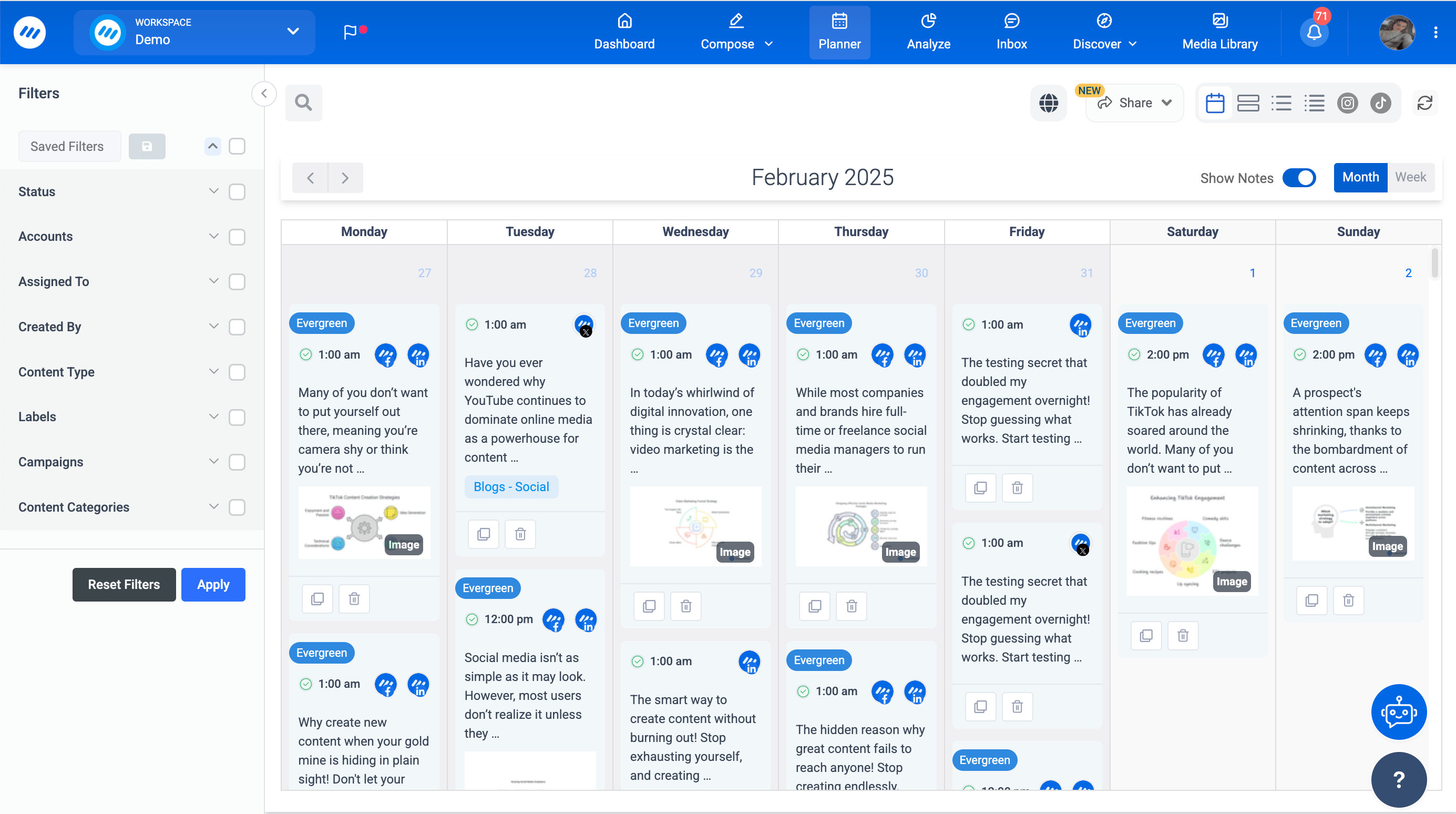
7. Outline budget and costs:
Transparency is critical when discussing budgets. Break down costs into clear categories such as content creation, paid advertising, analytics, and tool subscriptions. Explain the value behind each cost, for example, an investment in paid ads might generate a specific number of qualified leads, while a professional design subscription ensures brand consistency across campaigns.
Link each expense to a projected outcome so clients view it as an investment rather than just a cost.
Related read: How to set up a social media budget?

8. Measurement and reporting:
Clearly outline how you’ll measure the success of the social media strategy. Include reporting frequency and the metrics you’ll report on (e.g., reach, engagement, conversions).
One of the strongest selling points of any proposal is the promise of measurable results. Describe how you will track performance and provide updates. Monthly or bi-weekly reports should include engagement data, reach, clicks, conversions, and any other KPIs defined earlier.
With ContentStudio’s white-label reporting, you can automate much of this reporting, delivering professional, client-ready documents that save time and maintain accuracy.

9. Risk management:
Every social media campaign faces potential risks, from sudden algorithm changes to ad policy updates or even shifts in audience behavior. A strong proposal anticipates these risks and outlines backup strategies.
For example, if Instagram engagement drops, you might shift resources to TikTok or experiment with a new content format.Showing that you have contingency plans builds confidence in your ability to adapt.
Read-up: Social media risk management strategies

10. Add visual appeal and brand alignment
First impressions matter. Your proposal should look polished and reflect both your agency’s brand and the client’s brand aesthetic. Use their color palette in mockups, incorporate professional imagery, and keep formatting consistent. A visually engaging proposal shows you care about detail , a quality clients expect in campaign execution as well.
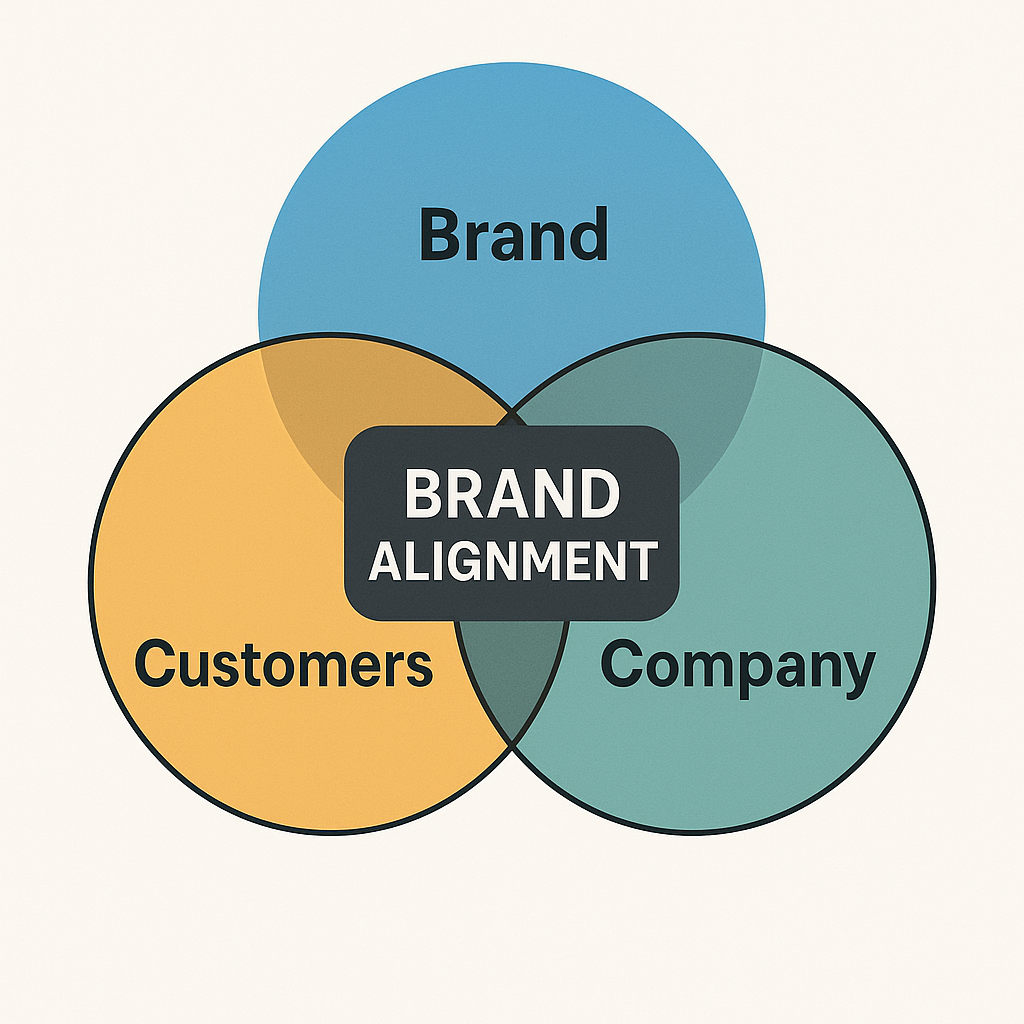
11. End with a strong call to action:
Close your proposal by clearly stating the next steps by adding a strong CTA. Invite the client to schedule a kickoff call, approve the initial calendar, or sign the contract. Reaffirm the value you bring and how your approach will directly contribute to their business objectives.
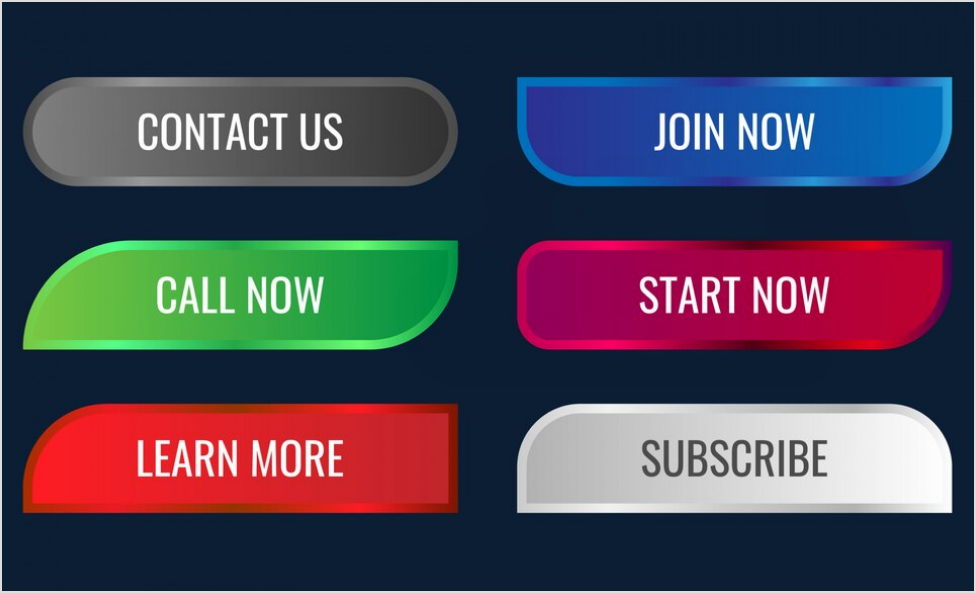
Keep your social media proposal straightforward. Ensure your client quickly understands your proposal without getting lost in complicated details.
Conclusion
Creating a social media proposal is more than just putting numbers and ideas together, it’s about presenting a clear roadmap that shows clients how your strategy will deliver measurable results. A well-structured proposal highlights your expertise, builds trust, and sets the foundation for a long-term partnership.
By including elements like competitor research, a content calendar, and clear KPIs, you position yourself as not just a service provider but a strategic partner invested in the client’s success. Using tools like ContentStudio can simplify this process by helping you plan, schedule, and track performance with ease.
Remember, the best proposals are those that tell a story, the story of where your client is today, where they want to go, and how you’ll take them there. With the right approach, your social media proposal won’t just win clients; it will win their confidence.
FAQs
How do I create a social media plan?
It is essential to understand your goals and target audience. Then, outline your content and engagement strategy and set measurable objectives.
What are the 4 Ps of social marketing?
Social marketing has 4Ps: Product, Price, Place, and Promotion. They form the foundation for developing effective social media strategies.
What should a social media proposal include in 2025?
A strong proposal should include an executive summary, client objectives, a social media audit, competitor research, SMART goals, a detailed content strategy, a sample content calendar, a clear budget, and a reporting framework. In 2025, it’s also important to highlight how you’ll leverage AI tools, short-form video, and multi-platform strategies while ensuring data privacy compliance.
How long should a social media proposal be?
There’s no fixed length, but most winning proposals are between 8 to 15 pages. The key is to provide enough detail to show your expertise without overwhelming the client. Use visuals, mockups, and calendars to make the content easy to digest. Quality matters more than quantity — focus on clarity, strategy, and results.
How do I make my proposal stand out to clients?
To stand out, personalize your proposal for the client’s industry, goals, and audience. Include competitive insights, propose innovative campaign ideas like Reels or TikTok challenges, and demonstrate how you’ll measure ROI. Adding a professional design, visuals from ContentStudio’s content calendar, and AI-powered content ideas will give your proposal a polished, forward-thinking edge.
Recommended for you
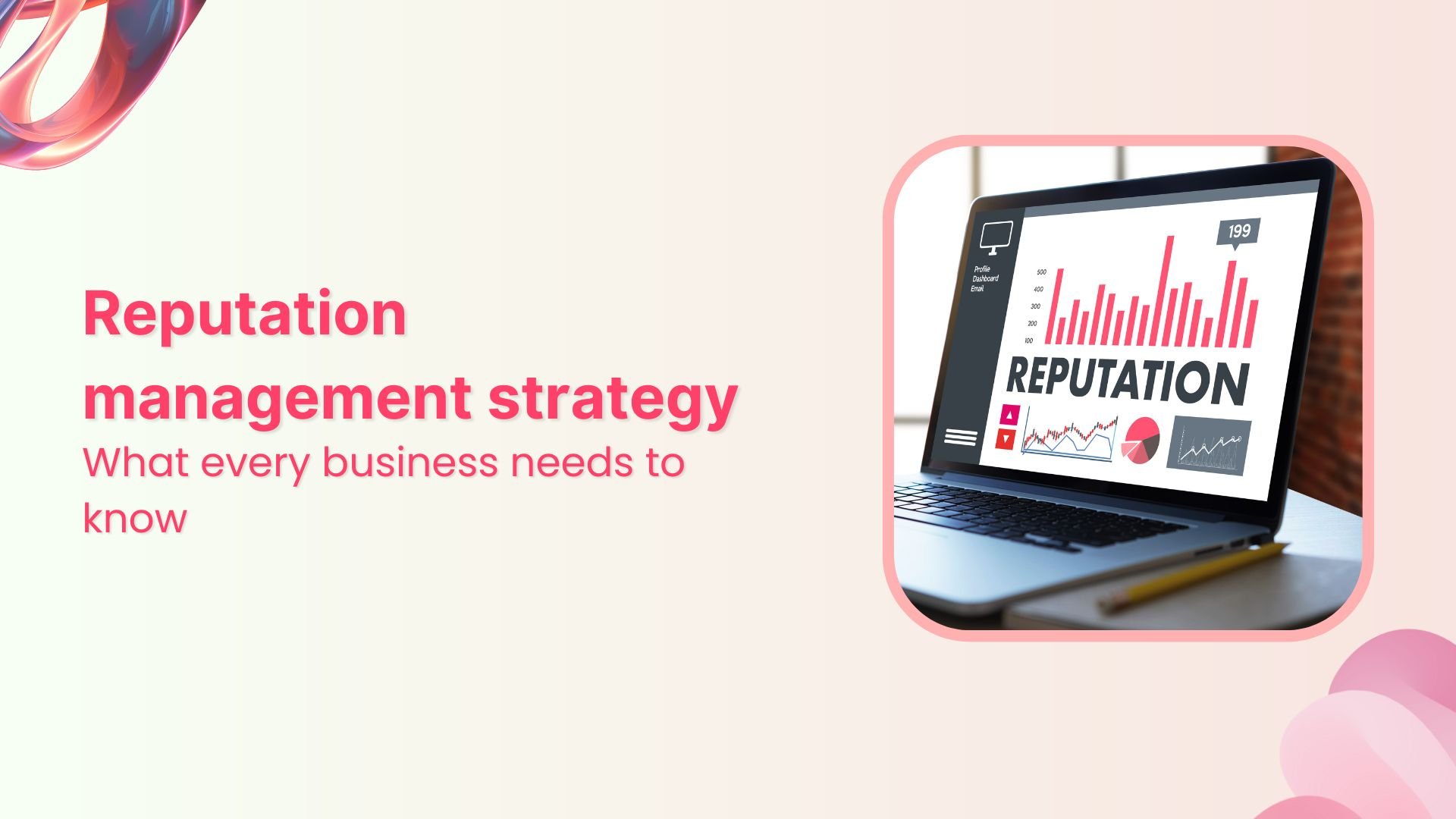
Reputation management strategy in 2026: What every business needs to know


Powerful social media management software
14-day free trial - No credit card required.


